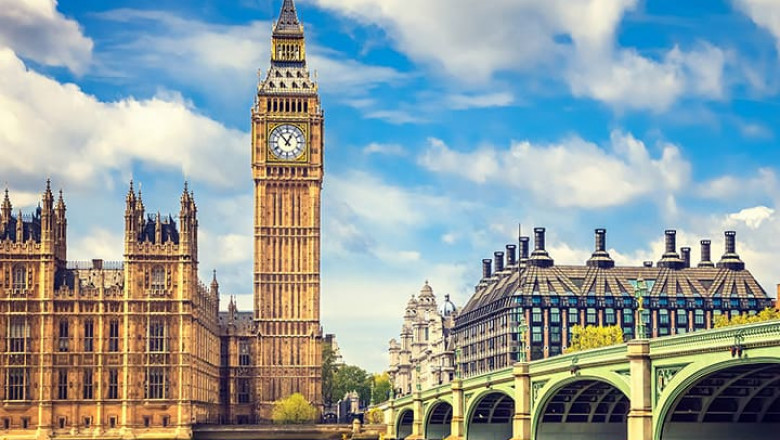views
Admission in the UK Made Easy For Indian Students
Studying in the United Kingdom is a dream for many Indian students. Renowned for its world-class universities, multicultural environment, and globally recognized degrees, the UK remains one of the most preferred destinations for higher education. Among the various intakes available, the September intake in the UK stands out as the most popular and widely chosen by international students, including those from India.
This comprehensive guide walks you through the key steps and tips to simplify the admission process, ensuring a smooth transition to studying in the UK.
Why Choose the UK for Higher Education?
The UK is home to some of the world’s oldest and most prestigious universities like the University of Oxford, the University of Cambridge, and Imperial College London. Indian students choose the UK for its:
- High-quality education
- Shorter course duration (especially for master’s programs)
- Vibrant student life
- Post-study work opportunities
- Strong global alumni networks
With over 600,000 international students enrolling annually, the UK’s higher education system is tailored to be inclusive and supportive.
Understanding the September Intake in UK
The September intake in the UK is the main admission cycle and offers the widest range of courses across all universities and colleges. This intake is also referred to as the “Fall Intake” and is ideal for Indian students who complete their academic year by April or May.
Key Advantages of the September Intake in UK:
- Maximum course availability across all levels (undergraduate and postgraduate)
- Higher chances of scholarships
- Better networking and job prospects due to larger student groups
- Easier alignment with Indian academic timelines
Most universities begin accepting applications for the September intake as early as November of the previous year, and deadlines can stretch up to May or June.
Step-by-Step Guide for Indian Students
1. Research Your Course and University
Start by shortlisting universities that offer your preferred course during the September intake in UK. Use official university websites, rankings, and forums to gather information on:
- Entry requirements
- Course content and duration
- Tuition fees
- Scholarship opportunities
Popular choices among Indian students include business, engineering, data science, law, healthcare, and design.
2. Prepare for English Language Proficiency Tests
Most UK universities require proof of English language proficiency. The IELTS (International English Language Testing System) is the most commonly accepted test.
Tips for IELTS Preparation:
- Aim for a band score of at least 6.5–7.0
- Practice all four sections: Listening, Reading, Writing, and Speaking
- Use British Council or IDP resources
- Enroll in online or offline coaching if needed
3. Keep Academic and Financial Documents Ready
Typical documents required for admission include:
- Academic transcripts and certificates
- Statement of Purpose (SOP)
- Letters of Recommendation (LORs)
- Updated CV or resume
- Valid passport
- Proof of funds for tuition and living expenses
Most universities require a minimum of 70–75% in your previous academic qualifications, but this varies by program and university.
4. Apply to Universities (Jan–May)
Submit your applications online directly through university portals or via UCAS (Universities and Colleges Admissions Service) for undergraduate courses. The best time to finish your application's September intake in the UK is between January and April.
Check for early deadlines for top universities or specific programs like medicine or law.
5. Apply for Scholarships
UK universities and government bodies offer a variety of scholarships for Indian students applying for the September intake in UK, including:
- Chevening Scholarships
- Commonwealth Scholarships
- GREAT Scholarships
- University-specific merit awards
Apply early, as many scholarships have deadlines months before course start dates.
6. Accept Offer and Start Visa Process (May–July)
Once you receive an offer letter, accept it and pay the initial deposit. You’ll receive a CAS (Confirmation of Acceptance for Studies), which is essential to apply for your Tier 4 Student Visa.
Ensure your financial documents meet the UKVI (UK Visas and Immigration) guidelines to avoid visa delays or rejections.
7. Prepare for Departure
After receiving your visa, plan your travel, accommodation, and university registration. It’s a good idea to arrive at least 2–3 weeks before your course begins to settle in and attend orientation sessions.
Common Mistakes to Avoid
- Waiting until the last minute: Applications, scholarships, and visas take time. Start your preparations at least 12–15 months in advance.
- Ignoring visa requirements: Ensure you meet the maintenance funds requirement and submit the correct financial documents.
- Skipping IELTS or submitting low scores: Even if some universities waive IELTS, a strong score strengthens your application.
- Not applying for scholarships: Many Indian students miss out due to late applications.
Also Read:- Thinking About a Partner Visa in Australia? Here’s the 2025 Guide
Conclusion
The best route for Indian students who want to study abroad at a high level is the September intake in the United Kingdom. With the right preparation, timely applications, and strong academic and English proficiency, you can maximize your chances of securing admission to your dream university.
Academic excellence, cultural exposure, and rewarding career opportunities are all available to students who study in the UK. Start early, plan smart, and make the most of the vibrant academic landscape the UK has to offer.














Comments
0 comment